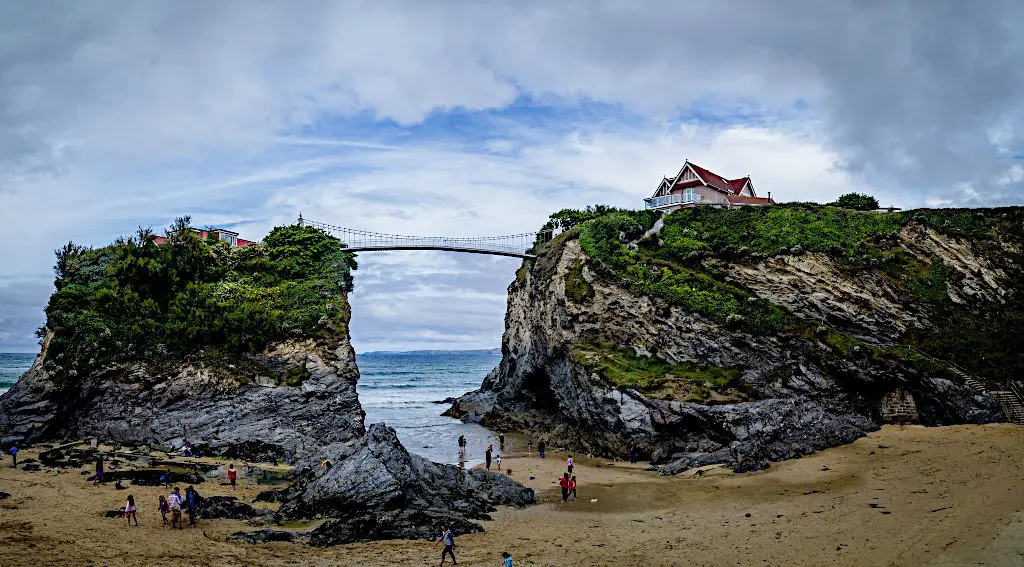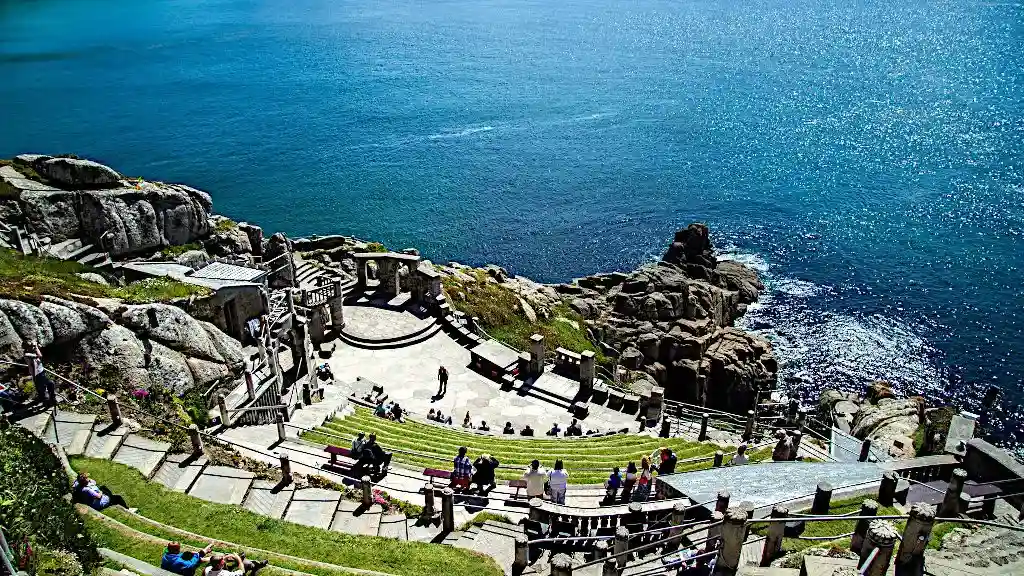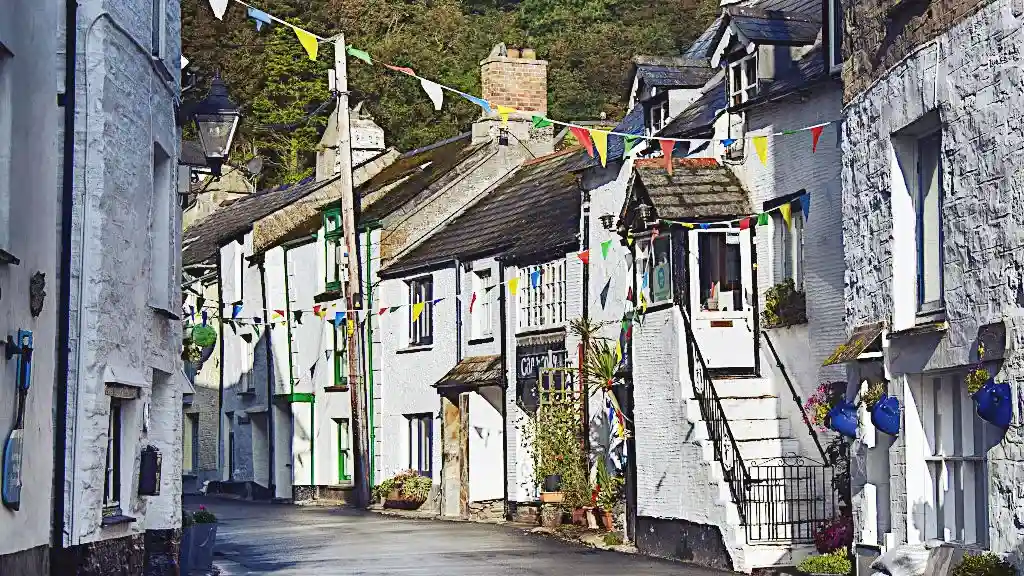Blissful Bank Holiday breaks in Cornwall

A land of time and tide
Cornwall has some of the most beautiful and scenic parts of the UK (finest beaches, stunning scenery and dramatic cliffs). If you're looking for a Bank Holiday break in Cornwall, then look no further. We have compiled a list of the top destinations for this year's long weekends.
There are plenty of reasons to spend your Bank Holiday breaks in Cornwall. There are as many reasons to return at any time during the year.
CONTENTS
- 1. Spend some quality time in Cornwall
- 2. Top Cornwall Bank Holiday destinations
- 3. The Eden Project
- 4. The Lost Gardens of Heligan
- 5. Tintagel Castle
- 6. Land's End
- 7. Pendennis Castle
- 8. St Ives. Guess why it is so popular
- 9. Minack Theatre
- 10. Geevor Tin mine
- 11. Cornish food
- 12. Bank holiday cottages in Cornwall
- 13. Travel to Cornwall
- 14. Cornwall: Weather and climate
- 15. More great UK Bank Holiday breaks
- 16. Explore more of Cornwall
Spend some quality time in Cornwall
Cornwall has a staggering number of more than 300 pebbly and sandy beaches. And the Cornwall Tourist Bureau has counted them all. It also has a beautiful coastline, perfect for short breaks.
Cornwall boasts of exotic gardens, a rich mining history, fishing, and agriculture. 370 square miles are designated as an Area of Outstanding Natural Beauty (AONB). You can find some of Britain's most beautiful landscapes and wildlife habitats here.
The best places to let go of your worries

If you fancy a short summer holiday, e.g. a May or August bank holiday break — Cornwall is the place for you. It has breathtakingly beautiful scenery and plenty of things to do, see and eat. You can enjoy the local cuisine, above all the iconic and authentic pasty.
The best way to experience Cornwall’s natural beauty is by staying in one of its many holiday homes or cottages. You can also take a trip to one of Cornwall’s exotic gardens or go fishing on its many rivers and estuaries.
The Cornish town of St Ives is well known as an artists' colony. There are plenty of opportunities for traditional seaside fun at nearby Looe, Polperro and Fowey.
If you want to see something less touristy, watch the fishermen in Newlyn bring in their catch from one of the many boats in the harbour.
Cornwall is home to some of Britain's most iconic attractions:
- Land's End, where you can see the UK's most westerly point,
- the Eden Project in St Austell, which has over 6 million visitors each year,
- the Camel Trail, which starts at Padstow on the North coast and ends at Bodmin Moor in the South East corner of the county (18 miles / 29 km),
- the South West Coast Path is "UK’s longest and best-loved National Trail", a walking route 303 miles long that stretches from Minehead in Somerset to Poole Harbour in Dorset via Plymouth and Land's End.
Top Cornwall Bank Holiday destinations
Cornwall is a great place to go on a short holiday at any time of year, but if you're looking for a Cornwall bank holiday weekend, there are some great places to see.
Here are some top picks for a weekend Break in Cornwall:
The Eden Project

The Eden Project has thousands of plants from all over the world.
It was founded in 2001 as part of an ambitious regeneration project for the rundown seaside town of St Austell. Since then, the Eden Project has been one of Cornwall's most popular attractions, with over 1.5 million visitors each year. The Eden Project is frequently found in top ten lists on travel websites across the internet due to its stunning architecture, botanical gardens, and rainforest habitats.
There are five biomes: Mediterranean, Tropical Rainforest, Cool Temperate Forest, Desert Biome and The Lost World Biome which has the largest tropical greenhouse in Europe.
Parking is spacious, and so are the grounds themselves: Lots of walking involved, but many interesting things to see.
The Lost Gardens of Heligan

The Lost Gardens of Heligan are another popular attraction for Cornwall Bank holiday breakers.
Situated on the outskirts of Mevagissey, the vast estate suffered decades of neglect after WWI. It was only in the late 1990s that the gardens were uncovered again and restored to their former glory (and even better).
You should bring some time, preferably 3 to 4 hours, and it is recommended to book in advance. Take your time exploring this green lost world...you can explore 81 hectares (= 220 acres) of wildlife, woodland and farmland scenery.
Visit the Victorian Productive Gardens, Pleasure Grounds and the Jungle. Walk along winding paths laid out over two centuries ago. A stroll in the woods becomes a magical adventure! Discover The Giant’s Head, Mud Maid and Grey Lady — sculptures hidden among the trees and blended into the natural landscape.
This is a great place for a family day out. There is a nice adventure play area, farm animals and a long, long Burmese rope bridge perfect for little explorers.
The Lost Gardens of Heligan Website
Tintagel Castle

If you're looking for a Bank Holiday break that combines history and legend, look no further than Tintagel Castle.
Tintagel Castle is one of the most famous sites in Cornwall. It has been linked with King Arthur since medieval times, when it was believed that he was born here in around 516 AD (stones dating back to the 7th century have been excavated at the castle).
The castle ruins sit high above the beach and offer dramatic views across the ocean and surrounding countryside. A spectacular footbridge gives visitors access to the Great Hall, the peninsula where a statue (Gallo) of King Arthur is located and to Merlin's Cave.
Land's End

The Land’s End needs little explanation. It is the westernmost point of Cornwall and also the name of the peninsula which stretches from St Ives on the North coast and Penzance on the South. As such, situated at the southwestern edge of Cornwall, Land's End is perhaps the county’s most iconic landmark and one of the UK’s best-known sights. It’s also popular among tourists, so it’s essential to plan if you want to get the best out of your visit.
The area is known for its rugged scenery, especially around Cape Cornwall and Land’s End. The most famous landmark here is the Old Lizard lighthouse, which was built in 1665 and is still active today.
Other attractions in this part of Cornwall include:
- Cape Cornwall lighthouse
- The Gurnards Head
- Land’s End Shambles
- The Longships lighthouse
The name Land's End comes from an old Cornish saying, which translates as "the end of the world". It's simply a great location to capture the sunset over the Atlantic Ocean all year round. In late afternoon and evening, sunlight will illuminate the cliffs and islands, turning them to golden tones.
Pendennis Castle
A must-see for any history lover, Pendennis Castle has been guarding Cornwall against invaders since Henry VIII. The circular artillery fort was built in 1540. From Tudor times through the English Civil War and both World Wars, Pendennis Castle protected the Fal estuary and a wide stretch of Cornish coast from invasion. Nowadays, the English Heritage manages and maintains the castle.
Pendennis Castle is set on a rocky headland with breathtaking views out to sea. On your visit, you can climb up to the top of the keep for sweeping views over Falmouth Bay and enjoy acres of green space at this historic gem. The museum hosts a wide variety of Tudor cannons and WW2 guns.
St Ives. Guess why it is so popular

Welcome to St Ives, whose azure waves and bustling nightlife are matched by the Cornish town's rich artistic heritage.
St Ives is the perfect place for a Bank Holiday getaway. The art scene is inspirational, the seafood is exquisite and a lovely holiday atmosphere pervades! Rightfully so, the village was crowned Britain's best seaside town in 2007, 2010 and 2011.
St Ives is much more than a mere bucket-and-spade tourist town! This little gem is situated on the Atlantic coast of Cornwall. Crystal clear waters and great waves offer plenty of places to swim, surf and enjoy the beach (and the numerous beach cafés as well).
Rugged views, exhilarating clifftop walks, beaches and the good surf at Porthmeor Beach — these are just a few of the ingredients that shaped the UK's favourite seaside destination.
Minack Theatre

Happy Birthday, Minack Theatre! You're old now (90 years), but still thriving and growing.
Minack Theatre is no stranger to drama, and the Shakespearean play "The Tempest" would offer so many occasions for fancy wordplay to describe the remarkable and stunning ocean views.
If you are lucky to have a clear sunny day when you visit this unique theatre, you look out over a turquoise sea surrounded by the vibrant colours of the flora, and the view of Cornwall's coastline. Perched on the rugged cliffs of South-West Cornwall, over a quarter of a million people visit Minack Theatre each year to enjoy the views and experience the magic of live performance in this unique Cornish landmark.
The acoustic is exceptional, but if you intend to come for a play, bring a small cushion... Sitting on a stone seat or hard grass will make even a Shakespearean play quite uncomfortable after some time. Also pack a lightweight blanket, umbrella and some treats that will keep you going all night.
Geevor Tin mine
If you're near Land's End, why not spend half a day visiting the Geevor Tin Mine?
A remnant of the once-dominant Cornish tin-mining industry, the mine was in operation from 1837 until 1990. The mine has been preserved and turned into a living exhibit.
You can walk through the engine house, and the workshops, see some impressive engines, train shoots, and mine shafts (Victory shaft has a depth of 480 metres!) and you'll even get to see where the miners slept, too.
When you're done wandering around the mine itself, there are also excellent pasties to be had at the café. A museum tells you more about tin mining in its various stages, both at Geevor and around Cornwall.
Cornish food
Pasty

Pasties have been the staple diet for Cornish miners for hundreds of years. Nowadays, they are recognized as "the" Cornish food.
Just like Parmigiano, the pasty is "PGI" protected. A "PGI" label is a special kind of trademark that identifies and guarantees the quality, reputation or another characteristic of a good (such as food, wine or clothing) originating in a particular region.
Pasties are portable food, a boon when workers had long working hours underground in the mines of Cornwall. Its pastry case protected the food from dirt and other contaminants, and kept it warm at the same time, while its hearty ingredients provided enough energy to keep people going through their laborious days.
The scenery and taste of the food will make your Bank Holiday breaks in Cornwall unforgettable.
Bank holiday cottages in Cornwall
Stay for a short break (or longer) in a self-catering cottage
Escape from the city's hustle and bustle and unwind in beautiful, natural settings. Cornwall cottages combine the tranquillity of picturesque locations with all the comforts of modern-day amenities (and perhaps the added luxury of a hot tub…).
Many cottages in Cornwall are situated in the countryside or along the coastline. There is a wide choice of holiday cottages to be found around the picturesque villages of Polperro, Fowey, and Mevagissey, as well as the towns of St Ives and Newquay. Many of these cottages offer stunning views of the ocean, the beaches and the surrounding countryside. Ideal to take a long walk or a hike and to get some fresh air. Enjoy the landscape, or learn more about the area's fascinating history and culture.
Types of Cornwall cottages
Book a self-catering lodge for a long weekend bank holiday break. Enjoy the freedom you need and privacy you desire. Get the cosiness of a home away from home.
- Beach cottages: Located near the coast, offering stunning views of the ocean and easy access to the beach.
- Countryside cottages: Nestled in the countryside, providing a peaceful and secluded retreat.
- Pet-friendly cottages: Allowing guests to bring their furry friends along on their holiday.
- Family-friendly cottages: Designed to accommodate families, with multiple bedrooms and plenty of space.
- Luxury cottages: Offering high-end amenities and finishes, perfect for a special occasion or romantic getaway.
- Budget cottages: More affordable options for travellers on a tight budget.
- Traditional cottages: Charming, characterful properties with traditional features such as thatched roofs and stone walls.
- Modern cottages: Sleek and contemporary properties with up-to-date facilities.
Travel to Cornwall
Cornwall occupies the southwestern tip of England, surrounded to the north and south by the Atlantic Ocean. To the east, Cornwall is bordered by the county of Devon.
Cities

Cornwall is a predominantly rural area, with the Cathedral City of Truro being the only city and administrative centre in the county.
Airports
Newquay Airport (NQY) is the only airport in Cornwall with direct national and international connectivity. Passenger numbers peaked in pre-Corona times, with almost 500,000 passengers handled in 2019. You can directly fly out to Ireland (Dublin), to all major airports in Scotland (Manchester, Edinburgh, Glasgow, Aberdeen, Newcastle), London (Gatwick and Heathrow) and Spain (Alicante).
A frequent train service links London (Paddington station) to Cornish stations like Coombe, Penryn, St Ives and Penzance.
If there's more to a train ride than getting from A to B fast: Jump on one of the scenic railway trains and take in the views as the train takes you past Cornwall's golden sand beaches.
Great Scenic Railways Cornwall
Cornwall: Weather and climate
2021 average temperatures
Cornwall has a mild climate due to its southern location and the fact that it is surrounded by a moderately warm sea. The hours of sunshine vary throughout the year and the seasons. In the summer months (July and August), temperatures are around 20 degrees. The average rainfall in Cornwall's coastal regions is 900-1000 mm per year, with most rain falling between October and March.
| Temp | J | F | M | A | M | J | J | A | S | O | N | D |
|---|---|---|---|---|---|---|---|---|---|---|---|---|
| Max | 11 | 12 | 15 | 14 | 18 | 21 | 26 | 20 | 24 | 18 | 14 | 13 |
| Min | 2 | 1 | 4 | 5 | 7 | 11 | 13 | 13 | 13 | 11 | 6 | 6 |